Wednesday got off to an unexpected start: no hydro. No lights, no coffee, et al for our early (very) day's tour.
First stop was at Port Douglas for a much anticipated cup of coffee
...then onto Mossman Gorge for the Ngadiku Dreamtime Walk. Our guide Rodney's mother is a local Indigenous woman Ngadiku (Nar-di-gul) and his father a mixed-race European. Ngadiku means stories and legends from a long time ago in local Kuku Yalanji language. It's interesting, as to date the Aborigines we have met are mixed race, yet identify strongly with an aboriginal tribe and speak the local tribe's language.
The tour began with a traditional ‘smoking’ ceremony to cleanse and ward off bad spirits. (Sher opted out of that part of the experience - sure to caused voice disappearance).
Rodney conveyed some interesting stories of growing with a traditional family on his mother's side. For example, as a little kid his grandfather on his mother's side would smear little Rodney with the grandfather's sweat to protect him from whatever evil may be lurking by deceiving the evil doers into thinking the little kid was the grandfather, someone with whom you did not trifle
. Needless to say, little Rodney's father was not impressed with the sweat smearing but respected his wife's aboriginal culture and went along with it.
The walk meandered through the rainforest and with personalized explanations of culturally significant sites such as reconstructed traditional huts or humpies. Upon entering an area of impressive boulders where the presence of the ancestors was strong, Rodney sang a request for permission to enter and asked for protection for for the the group he was leading. Our guide then demonstrated how pounding on a large butress root of a tropical tree with a rock could generate loud low frequency sounds that carried through the forest and could be used to communicate with others at a distance. He also demonstrated traditional plant use, identified bush food sources and context for the aboriginal people who lived in the traditional way.
Traditions like making bush soaps were demonstrated
. When the right type of leaves are picked and crushed, adding water while rubbing the crushed leaves in your hands creates a lather that can be used for washing. After rinsing off, your hands feel soft as kid gloves (who needs Skin So Soft?).
Body painting is a long standing tradition with Aboriginal people and Rodney demonstrated how he has adapted the use of ochre, charcoal and white clay to convey who he is and his clan affilation, including the integration of his European ancestor (the use of white clay is interesting as the bordering Aboriginal group only used white in their colour palette to convey death). It has been reassuring to see how some modern Aboriginal people are taking traditions from the past and adding their own interpretation and adaptations to make meaning of who they are today and their place in the world. Unfortunately, there are others who have not adapted or recovered from the bad treatment received from the European colonizers and have become street people in the local communities, something we know all too well in Canada
.
Tour completed with serving of traditional bush tea and damper (see earlier posting for a discussion of damper).
Ed and I returned to the Interpretive Centre with others in group, cooled down in the Centre airconditioning and had lunch. Ed does not miss a chance to have a barramundi burger or barramundi fish and chips. Barramundi is a large game fish that lives at the mouths of rivers flowing into the sea. It follows a seasonal wet season/dry season migration pattern up and down the river to mate and spawn. It has also perfected the ability to change sex without surgery! Perhaps more on that later.
We then walked back to the Gorge for our own independent walking tour. Always a delight (even if a sweaty one here)......
Overnight at Daintree Riverview Lodge
. A very basic room but an inviting shared outdoor kitchen and 'living room'. There were very few folk staying there at this time (it is the end of the season) but I imagine it is hopping during 'the season'. View which included the river was astonishing. The distinctive V-ripple and "bumpy" profile low in the water of a large saltwater crocodile swimming up river at sunset generated quite a bit of interest in the guests.
A real treat was seeing the mass evening flight of flying foxes, large fruit bats - wing span exceeds 3 feet, that leave their day time roosts in the mangroves along the shore of the Coral Sea and fly inland. They feed on tropical fruits in the rainforest and maraud orchards and trees in communities and personal gardens (one wildlife auther suggested the numbers may exceed one million bats). Needless to say there is a big debate on how the bats should be treated (think deer management in Canada) as their constant depradation of commercial orchards and the abundant smelly quano they leave behind in communities has many clamouring for agressive bat management programs
. (Apparently fruit bats were not a favorite food in the Aboriginal diet one of our guides explained as he held his nose.)
Ed was up for a very early morning bird cruise the next day and sighted over thirty five birds. The seasonal migration from New Guinea was just starting so the morning count included a few early migrants such as the grandly named and elegantly handsome Pied Imperial Pigeon. Another migrant, the colonial nesting Metallic Starlings (not a starling at all) were starting to build their colonial nests in two trees on either side of a small side channel with much flying back and forth. One of my favorites was a small brilliantly coloured bird, the Azure Kingfisher a year round resident. A particularly good sighting for me was the Double-eyed Fig Parrot, an unfortunate name for the smallest of the Australian parrots (4 to 6 inches in size), whose picture appears everywhere on advertisements for natural history and birding tours
.
After this initial cruise Ed dashed back to the lodge to pick me up then we were off on the water again - this time on a crocodile tour (really an excuse to be on the water). But we did see a number of crocodiles and birds. Lots of local anecdotes, tales of just how high the water gets in the 'wet' especially when combined with a cyclone which appears to happen here on a regular basis.
Salt water crocodiles are a serious matter in Australia. Croc warning signs are posted everywhere near the ocean, and for good reason, the crocs can get up to 18 feet in length and will attack, kill and eat humans. Normally they eat fish and mud crabs but are very opportunistic. During one flood a lot of cattle were drowned on a nearby farm. The crocs stashed the dead cows in secure locations underwater along the river banks and waited for the carcasses to ripen before the feasting began!
The crocs we saw were just entering the breeding season and apparently an earlier tour group got to see some X-rated behavior! The female will lay many eggs in a large nest made of decaying vegetation and river mud. The nest is built now and as the rainey season progressess the wet vegetation will rot and generate the heat needed to incubate the eggs. Only a few of the eggs that hatch will result in adult crocodiles as many predators go after the eggs and baby crocs. You have to admire and respect a creature that has survived the breakup of continents and outlived the dinosaurs basically unchanged.
One exciting moment when Ed's hat went for a swim - but it was retreved with no fatalities. Whew you don't want to be without a hat here!
\\\\
MOSSMAN GORGE & DAINTREE
Thursday, October 23, 2014
 Daintree, Queensland, Australia
Daintree, Queensland, Australia
Other Entries
-
7Now this is a transit system
Oct 0320 days prior Manly, Australiaphoto_camera1videocam 0comment 0
Manly, Australiaphoto_camera1videocam 0comment 0 -
8Our Manly home
Oct 0320 days prior Manly, Australiaphoto_camera2videocam 0comment 1
Manly, Australiaphoto_camera2videocam 0comment 1 -
9Manly wanderings
Oct 0419 days prior Manly, Australiaphoto_camera4videocam 0comment 1
Manly, Australiaphoto_camera4videocam 0comment 1 -
10Sydney
Oct 0419 days prior Sydney, Australiaphoto_camera4videocam 0comment 2
Sydney, Australiaphoto_camera4videocam 0comment 2 -
11Blue Mountains tour: park, plus
Oct 0518 days prior Sydney, Australiaphoto_camera2videocam 0comment 0
Sydney, Australiaphoto_camera2videocam 0comment 0 -
12DAY OF WINE, COFFEE & TERMITES
Oct 0815 days prior Kuranda, Australiaphoto_camera6videocam 0comment 1
Kuranda, Australiaphoto_camera6videocam 0comment 1 -
13Rainforest House
Oct 1211 days prior Kuranda, Australiaphoto_camera5videocam 0comment 5
Kuranda, Australiaphoto_camera5videocam 0comment 5 -
14Stickybeaking in Kuranda
Oct 149 days prior Kuranda, Australiaphoto_camera9videocam 0comment 0
Kuranda, Australiaphoto_camera9videocam 0comment 0 -
15Aussie word of the day: SHIRTFRONT
Oct 158 days prior Kuranda, Australiaphoto_camera0videocam 0comment 0
Kuranda, Australiaphoto_camera0videocam 0comment 0 -
16TERMITES
Oct 167 days prior Kuranda, Australiaphoto_camera1videocam 0comment 0
Kuranda, Australiaphoto_camera1videocam 0comment 0 -
17NATURE NOTES:
Oct 167 days prior Kuranda, Australiaphoto_camera3videocam 0comment 1
Kuranda, Australiaphoto_camera3videocam 0comment 1 -
18Temple & mangroves
Oct 167 days prior Cairns, Australiaphoto_camera7videocam 0comment 0
Cairns, Australiaphoto_camera7videocam 0comment 0 -
19MEANDERS CONTINUE:
Oct 185 days prior Kuranda, Australiaphoto_camera8videocam 0comment 0
Kuranda, Australiaphoto_camera8videocam 0comment 0 -
20UNEXPECTED
Oct 185 days prior Herberton, Australiaphoto_camera17videocam 0comment 1
Herberton, Australiaphoto_camera17videocam 0comment 1 -
21AUSSIE WORD OF THE DAY: FOSSICKING
Oct 194 days prior Kuranda, Australiaphoto_camera0videocam 0comment 0
Kuranda, Australiaphoto_camera0videocam 0comment 0 -
22Aussie word of the day: DAMPER
Oct 221 day prior Kuranda, Australiaphoto_camera1videocam 0comment 0
Kuranda, Australiaphoto_camera1videocam 0comment 0 -
23Casso-wary!!
Oct 23earlier that day Daintree, Australiaphoto_camera12videocam 0comment 0
Daintree, Australiaphoto_camera12videocam 0comment 0 -
24MOSSMAN GORGE & DAINTREE
Oct 23 Daintree, Australiaphoto_camera11videocam 0comment 0
Daintree, Australiaphoto_camera11videocam 0comment 0 -
25RABBITOHS
Oct 241 day later Kuranda, Australiaphoto_camera3videocam 0comment 0
Kuranda, Australiaphoto_camera3videocam 0comment 0 -
26Like
Oct 241 day later Kuranda, Australiaphoto_camera1videocam 0comment 2
Kuranda, Australiaphoto_camera1videocam 0comment 2 -
27Great Barrier Reef - Quicksilver Wave Piercer
Oct 285 days later Port Douglas, Australiaphoto_camera7videocam 0comment 0
Port Douglas, Australiaphoto_camera7videocam 0comment 0 -
28Willie Gordon & "Gangurru" carnage
Oct 318 days later Cooktown, Australiaphoto_camera14videocam 0comment 0
Cooktown, Australiaphoto_camera14videocam 0comment 0 -
29Split Rock
Nov 019 days later Cooktown, Australiaphoto_camera9videocam 0comment 0
Cooktown, Australiaphoto_camera9videocam 0comment 0 -
30Heron Island - a misnomer
Nov 1018 days later Heron Island, Australiaphoto_camera28videocam 0comment 1
Heron Island, Australiaphoto_camera28videocam 0comment 1 -
31Atherton Tableland
Dec 2765 days later Atherton, Australiaphoto_camera34videocam 0comment 0
Atherton, Australiaphoto_camera34videocam 0comment 0 -
32Heat, Lava Tubes & Emus
Dec 2765 days later Cairns, Australiaphoto_camera24videocam 0comment 0
Cairns, Australiaphoto_camera24videocam 0comment 0

 Daintree, Queensland, Australia
Daintree, Queensland, Australia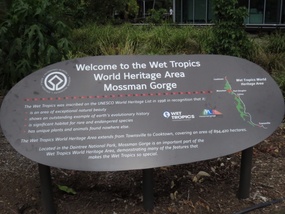
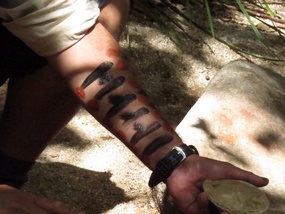
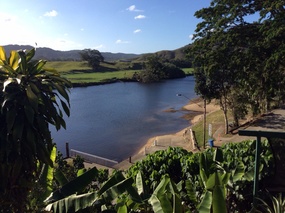
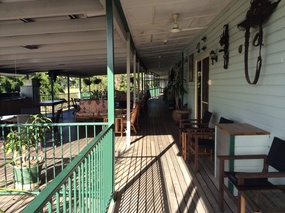
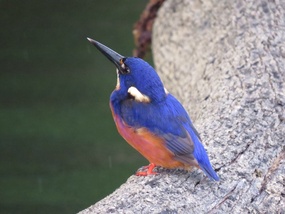
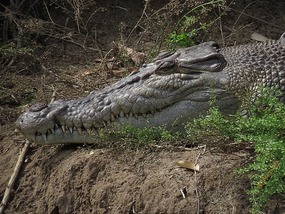
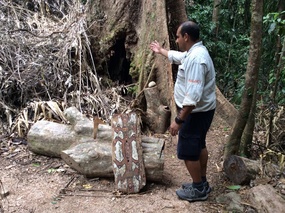

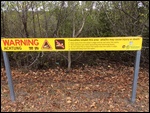
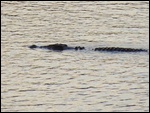
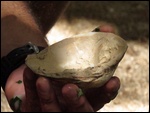
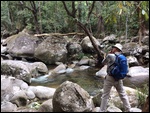
2025-05-23